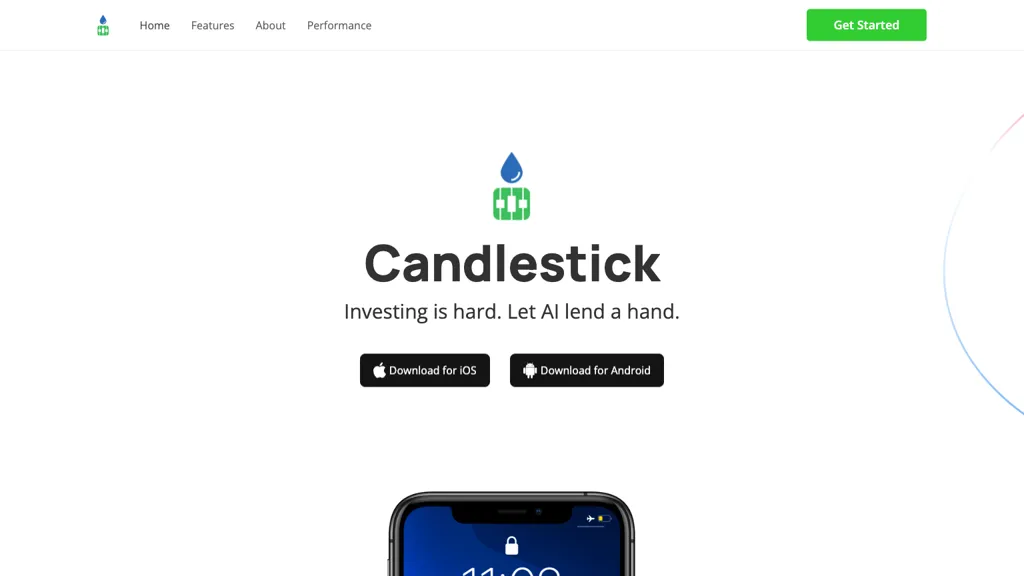20 Pro Tips On Selecting AI Stock Trading Platform Websites
20 Pro Tips On Selecting AI Stock Trading Platform Websites
Blog Article
Top 10 Tips For Assessing The Integration Of Ai Stock Analysing Trading Platforms
AI stock-predicting and analyzing platforms need to be compatible and seamless with the existing systems, tools and workflows. A platform that seamlessly integrates with your existing tools and systems as well as workflows will greatly improve efficiency and effectiveness. Here are 10 top strategies to help you analyze the compatibility and integration between these platforms.
1. Check Brokerage Integration
Supported brokers: Ensure that the platform is compatible with the brokerage you prefer account, or trading account.
Trade execution: Check if the platform supports direct trade execution using the integrated broker.
Account synchronization: Make sure that the platform can sync in real time account balances and positions and transaction history.
2. Evaluate the availability of APIs
API access: Ensure the platform has an API (Application Programming Interface) that allows developers to develop customized tools or to automate workflows.
API documentation: Review to see if there are clear examples of how the API can be utilized.
Rate limits: Verify if the API has acceptable rate limits and is able to handle your anticipated use.
3. Review the Third-Party Integration
Popular Tools: Ensure that that the platform is compatible with other tools, such as Google Sheets and Excel.
Export and import of data. Check that the platform is able to easily export or import from/to any other tool.
Extensions/Plugins: Check if the platform is compatible with extensions or plugins for added features.
4. Test Compatibility With Operating Systems
Desktop compatibility. Make sure the operating system you prefer (Windows, macOS, Linux) is supported.
Mobile compatibility Check whether the platform has an application that works with iOS or Android.
Access via the internet (for additional flexibility): Verify that the platform can be accessed via the web browser.
5. Evaluation of Data Integration Capabilities
Data sources: Ensure that the platform is able to integrate various sources of data, like the market data providers, RSS feeds and social media sentiment.
Real-time feeds of data Check if the platform allows for real-time integration of data to offer up-to-date analysis.
Historical data import - Make sure that the platform allows you to import historical data into your backtesting or analytical software.
6. Examine cloud and On-Premise compatible
Cloud-based platform is accessible anywhere with an Internet connection.
On-premise solutions. If you are interested in on-premise deployments make sure your platform allows it.
Check for hybrid options. This is a method that combines cloud and on-premises capabilities.
7. Make sure to check for Cross Platform Syncronization
Device synchronization - Make sure that your platform is synchronized to sync settings and data across all devices (desktops, mobiles, tablets).
Verify that changes made to one device are immediately reflected on all devices.
Offline Access: Check for any limitations on the capabilities of the platform or data access while it's offline.
8. Examine the compatibility of trading Strategies
Automated or algorithmic trading: Verify that the trading platform supports these strategies.
Custom indicators - Make sure to check whether the platform allows the use of custom scripts and technical indicators.
Backtesting strategies. Verify that the platform supports strategies that are tested back using historical data.
9. Review Security and Compliance
Data encryption: Ensure the platform is using encryption to protect data in transit and at rest.
Authentication : Verify that the platform is compatible with safe authentication methods (e.g. 2-factor authentication).
Check for regulatory compliance: Make sure that the platform is compliant with the relevant regulations (e.g. GDPR, FINRA or SEC).
10. Test Scalability and Performance
Scalability is crucial. The platform needs to be able handle the growing quantity of data, as well as the the increasing number of users.
Performance during load: Determine whether the platform responds in volatile markets.
Utilization of resources - Make sure that the platform effectively uses system resources like CPU, memory or bandwidth.
Bonus Tips:
Users' feedback: Look for reviews and comments from users when evaluating the platform.
Free trial period: You can try a demo or a free trial to check the compatibility of the platform with your current workflows and tools.
Customer Support: Make sure the platform offers a solid assistance in connection problems.
These tips will help you determine the compatibility and integration of AI analysis and stock prediction platforms. This will ensure that they work seamlessly with your existing systems and increase your efficiency in trading. Read the recommended additional reading for blog examples including ai for stock predictions, ai trading tools, ai stock trading bot free, ai for investment, ai for investing, ai investing, ai stock, incite, investment ai, ai stock market and more.
Top 10 Tips For Evaluating Transparency Of Ai-Based Trading Platforms For Stocks
Transparency is a key factor in assessing AI-driven trading and stock prediction platforms. Transparency is crucial because it allows users to be confident in the platform, comprehend the choices made, and check the accuracy. Here are the top 10 tips to determine the level of transparency that these platforms offer.
1. The AI Models Explained in Clear Terms
Tips: Make sure the platform offers detailed information on the AI models and algorithms that are used to make predictions.
What's the reason? By understanding the technology, users are able to assess its reliability and limits.
2. Disclosure of Data Source
Tip
The reason: Knowing the sources of data will ensure that the platform has complete and accurate data.
3. Performance Metrics & Backtesting Results
Tips: Make sure you search for transparent reporting on performance metrics such as accuracy rates and ROI, as well the results of backtesting.
This will give users the ability to compare the performance of their previous platforms with those on the current platform.
4. Actual-Time Updates and Notifications
Tip. Determine if your platform provides real-time data as well as notifications about trades and changes in the system, for example trading predictions.
The reason: Real-time transparency makes sure that users are informed at all times about crucial actions.
5. Transparency in Communication regarding Limitations
Tips Make sure the platform discusses its risks and limitations in relation to trading strategies and forecasts.
What's the reason? Recognizing the limitations of a product builds trust, which helps users make better decisions.
6. Users can get access to raw data
Tips: Make sure that users can access the raw data or intermediate results that AI models use.
Why? Raw data access allows users to conduct their own analyses and test predictions.
7. Transparency and openness in the cost of fees and expenses
TIP: Ensure that the website clearly lists all fees, subscription costs, and potential hidden charges.
Transparent pricing minimizes the chance of unexpected costs, and fosters trust.
8. Regularly scheduled reports and audits
Check if your platform is regularly inspected by third parties or whether it has reports on its performance.
Independent verification is essential as it increases the credibility of the process and ensures accountability.
9. Explanability of Predictions
Tips: Find out on how the platform makes forecasts or makes specific recommendations (e.g. features importance, decision trees).
Why: Explainability enables users to better be able to comprehend AI decisions.
10. User Feedback and Support Channels
Tips. Check if there are channels available to provide feedback from users, support and transparency in response to users' concerns.
What is the reason? It shows a commitment for openness and the satisfaction of users.
Bonus Tip: Regulatory Compliance
Make sure the platform adheres and is clear regarding its compliance with financial regulations. This adds another layer of trust and transparency.
You can assess these aspects to find out if an AI stock trading and prediction platform is transparent, and make an informed decision. This will allow you to build your confidence and confidence in the capabilities of the platform. Read the best best ai stocks to buy now for more tips including how to use ai for copyright trading, free ai stock picker, ai options, ai copyright signals, chart analysis ai, ai investment tools, best ai stocks, ai stock trader, stock trading ai, ai stock prediction and more.